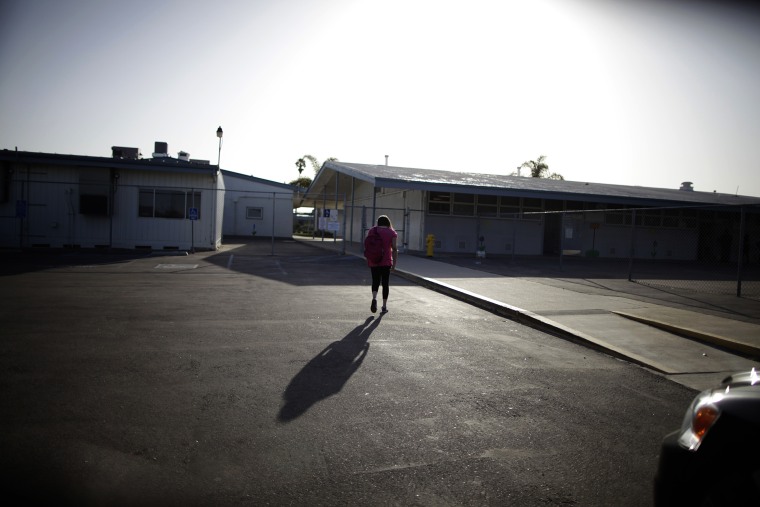It's almost Halloween - that time of year when kids worry about their costumes and their candy hauls. But for many American children, the concerns are even scarier: They're wondering where they'll be sleeping once the temperatures dip below freezing.
New numbers from the Department of Education’s National Center for Homeless Education (NCHE) show that a record number of students in grades K through 12 were homeless during the 2011-2012 school year: 1,168,354, to be exact. That figure represents a 72 percent jump from before the recession began, just six years ago.
In some states, the increase is even more stark: Maine and North Carolina counted more than 50 percent more homeless kids than they had the previous school year, while in North Dakota, the number more than doubled. In total, ten states experienced increases of 20 percent or more from the school year before.
The federal stats come on the heels of the Southern Education Foundation’s recent finding that, throughout the American South and West, low-income students made up more than 50 percent of public schoolchildren in 2011. In three states – Louisiana, New Mexico, and Mississippi – that number soared over the two-thirds mark.
So what happens when so many schoolkids have no place to call home? The NCHE survey found that 15 percent of the homeless children stayed in shelters at night; four percent had nowhere to go at all. That’s a lot of children without a safe, quiet place to sleep and study – both critical components to doing well in school.
Then there’s the shame factor: The NCHE numbers may well be underreported because students and families are embarrassed to admit they’re homeless. And when nobody knows the children are homeless, they can’t offer help – help that’s mandated by the McKinney-Vento Act, a piece of 1987 legislation that supports homeless students. In some places, that takes the form of new shoes and clothing, or cell phones so the students can always reach an adult. Elsewhere, McKinney-Vento initiatives have created study centers in homeless shelters, complete with computers, books, and tutors.
But all that costs money – something that’s in short supply these days. More kids are homeless because of the economy, yet the government can’t help them because it, too, is taking an economic beating. The challenge facing the educational system now is to stop that vicious cycle before the number of homeless students jumps even higher.
